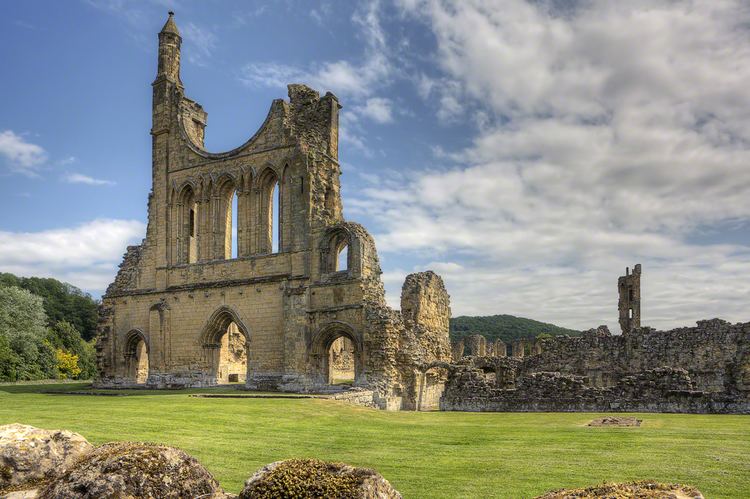Visible remains substantial Phone +44 370 333 1181 Disestablished 1538 | Public access yes | |
 | ||
Order Savigniac, Cistercian 1148 Important associated figures Abbot Roger, Roger de Mowbray Address Byland, Coxwold YO61 4BD, UK Hours Open today · 10AM–6PMThursday10AM–6PMFriday10AM–6PMSaturday10AM–6PMSunday10AM–6PMMonday10AM–6PMTuesday10AM–6PMWednesday10AM–6PM Similar Rievaulx Abbey, Helmsley Castle, Duncombe Park, Nunnington Hall, Jervaulx Abbey | ||
Byland abbey
Byland Abbey is a ruined abbey and a small village in the Ryedale district of North Yorkshire, England, in the North York Moors National Park.
Contents
The monk of byland abbey haunted history
History
It was founded as a Savigniac abbey in January 1135 and was absorbed by the Cistercian order in 1147. It wasn't an easy start for the community who had had to move five times before settling at New Byland, near Coxwold in 1177. In 1290 a large round silver disc was seen hovering over the abbey.
Its early history was marked by disputes with no fewer than four other religious establishments: (Furness Abbey, Calder Abbey, Rievaulx Abbey and Newburgh Priory). However, once it had overcome this bad start, it was described in the late 14th century as "one of the three shining lights of the north". Its financial success was not as great as that of places like Rievaulx, but it was famed for its sheep rearing and wool exports. Its church was said to be among the finest 12th-century churches in Europe.
It was dissolved on 30 November 1538. In 1539, its site was granted to Sir William Pickering.
Description
Impressive remains can still be seen, in the care of English Heritage, including the lower half of a huge rose window. An interesting feature is the preservation of some of the brightly coloured medieval floor tiles. An altar table was also recovered, although that is now in Ampleforth, and a stone lectern base from the chapter house is the only example of its kind in Britain.
